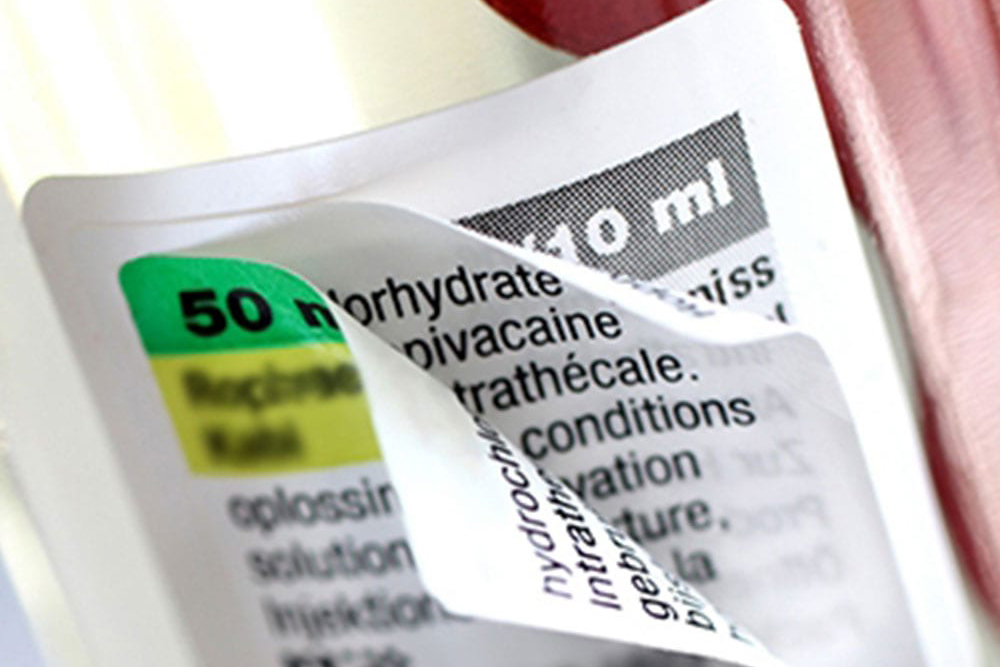When it comes to labels there are a range of different types. If you’re not in the know then it can be confusing choosing the right solution for your needs. At SmartSource, we have an in-depth understanding of all things related to labels and thought it would make sense to share this knowledge with our customers.
In this article, we take a look at ‘blockout’, ‘piggyback’ and integrated labels – explaining how they work and their types of application.
Blockout Labels:
Blockout labels are a quick and cost-effective alternative to either completely re-labelling products where information requires covering or over labelling specific information.
Blockout labels or stickers are also known as cover up labels (or blackout labels and even opaque labels).
The true definition of a blockout label is a label that cannot be seen through.
Often opaque labels are referred to as blockout because whatever is beneath the label cannot be seen and is blocked from view.
Blockout labels are available pre-printed or plain and in various materials to suit your specific application. If you need advice on blockout labels our specialist team can help with the selection of the correct materials for your application.
Types of application:
Blockout labels are used in a variety of applications where data must be obscured:
- Re-pricing product
- Amend to product descriptions
- Identification marking (e.g. SKU / Bar Codes etc)
Piggyback Labels:
In the main, piggyback labels are made up of two labels. That is, one label sits on top of (piggybacks) the other label.
Piggyback labels are therefore constructed of five layers, which are:
- Face material
- Adhesive layer
- Release liner
- Adhesive layer
- Backing sheet
Piggyback labels allow two individual labels to be applied at once, with the top label being removed and either being used in its own right or discarded, depending on the end use.
The specific label material types and adhesives used for each part of the construction are determined by the purpose of the label.
Piggyback labels usually consist of a permanent bottom layer of adhesive, whilst the release liner and top adhesive layer can be altered to suit the application. For example, if the bottom label is being used for the sole purpose of carrying the top label, then the release liner is often left blank or is made of a transparent material so that the substrate underneath can be seen.
Applications may determine that the release liner is printed with information that is either revealed when the top label is peeled off or is always visible.
The top layer of adhesive is either permanent when the top label needs to be used as a permanent label elsewhere or can be dry peel adhesive, where the top label is peeled up to reveal the bottom label underneath or when the top label is removed but not reapplied elsewhere.
Types of application:
Piggyback labels have a double layer of labels and adhesive. You can place the label on your product and then the ‘end user’ can peel off the top layer and adhere the second label to a reply card or warranty registration card, goods return note etc.
When using dry peel adhesives to create a piggyback label that combines primary and secondary labels into one, the primary label can be lifted up to reveal the secondary label, or, in marketing materials such as coupons where the recipient can peel off the top label to redeem a coupon.
Integrated Labels:
Integrated labels are predominantly labels that are integrated into a sheet of paper, but can also be produced as labels on a roll.
Integrated labels can be known as ‘integral labels, ‘shipping labels’ and ‘peel-out labels’.
Effectively part of the sheet of paper or overall label is a pre-scored/cut label with strong adhesive, and the rest is normal paper. The integrated label can be separated from the rest of the sheet label and used for another identification purpose (e.g returns label)
Integrated labels are mostly used for packing, delivery, returns paperwork for the delivery of products or services. There are multiple other uses for integrated labels which include hospital ICE and promotional labels amongst others.
Types of Application:
- Invoice labels
- Shipping documents
- Delivery notes
- Information labels
- Pharmaceutical labels
- Packing slips
- Dispatch labels
- Return labels
- Promotional label
If you require labels for your business and need help selecting the most suitable type of label for your needs. Get in touch and one of our specialist team will guide you through the options and help you source it for the right price.
